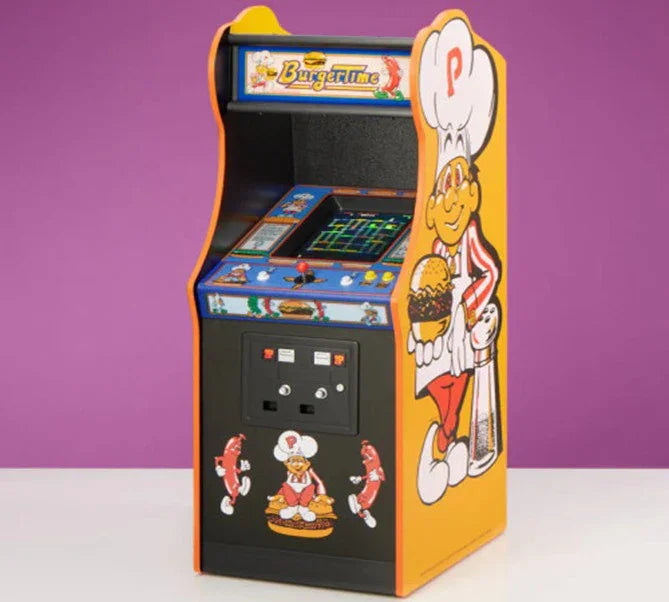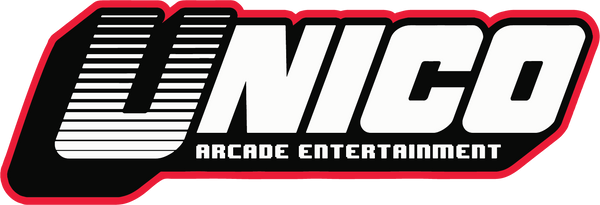
Data East Burger Time a classic in videogame history
Alex Mr
At Unico we have a huge love for the classics that made the arcade video game explosion happen all across the world. Today we look at one of the classics that made this explosion happen.
Here’s a deeper dive into the hardware history of Data East’s classic BurgerTime arcade, with visual references above:
🎮 Game & Cabinet Overview
- Arcade release: Late 1982 by Data East (DECO), licensed to Bally/Midway in North America
- Cabinet types: Standard upright (vertical CRT), also offered in cocktail (tabletop) editions.
- Controls: Simple — 4-way joystick + one button (to spray pepper).
🛠️ DECO Cassette System (Early Hardware)
- Launched: 1980–81, DECO was the first modular arcade system using cassette tapes + security dongles to load games.
- Loading times: ~2–3 minutes to transfer data from cassette to RAM.
- Processor setup: dual MOS‑6502 CPUs (~750 kHz and 500 kHz), Intel 8041 microcontroller, two AY‑3‑8910 sound chips, 240×240 raster, 32‑color palette
- Issues: High failure rate—cassette wear and unreliability prompted operators to switch to dedicated boards.

💾 Dedicated PCB Version
- Why: More stable than DECO; became the norm, especially in North America.
- Technical specs:
- CPU: Z80 multiprocessing (similar to other Data East boards), or dual 6502 in DECO variants
- Sound: AY‑3‑8910 PSG chipset for melodic effects; common in arcade/home computers
- Variants: Some believed to share similarities with Midway’s layout; still identical in gameplay, differing mainly in naming and artwork
🧩 Later Versions & Sequels
- Super BurgerTime (1990) ran on a DE‑0326‑3 PCB (68k CPU), showcasing mid-late ’80s evolution.
- DECO modular design informed later arcade systems like Nintendo’s VS. and JAMMA, despite its early retirement due to reliability problems.
📷 Visual Highlights
- Upright cabinet art — colorful side panels, iconic Peter Pepper motif
- Cocktail PCB removed during restoration — showcasing classic component layout
- Close-up of a dedicated PCB — soldered ROMs and chips typical of Bally/Midway boards
- Restorer’s workspace — green PCB board taken from a cocktail machine
📚 Summary Table
| Version | Platform | CPU(s) | Sound | Notes |
|---|---|---|---|---|
| DECO Cassette | Modular cassette | 2× MOS 6502 + Intel 8041 | 2× AY‑3‑8910 | Easy to swap games, but unreliable |
| Dedicated (DECO) | Upright/Cocktail | Z80 (or dual 6502) | 2× AY‑3‑8910 | Stable, ROM-based — became standard |
| Super BurgerTime | Sequel (1990) | 68K-based DE‑0326‑3 PCB | Likely AY or similar | Firmware upgrade with improvements |


